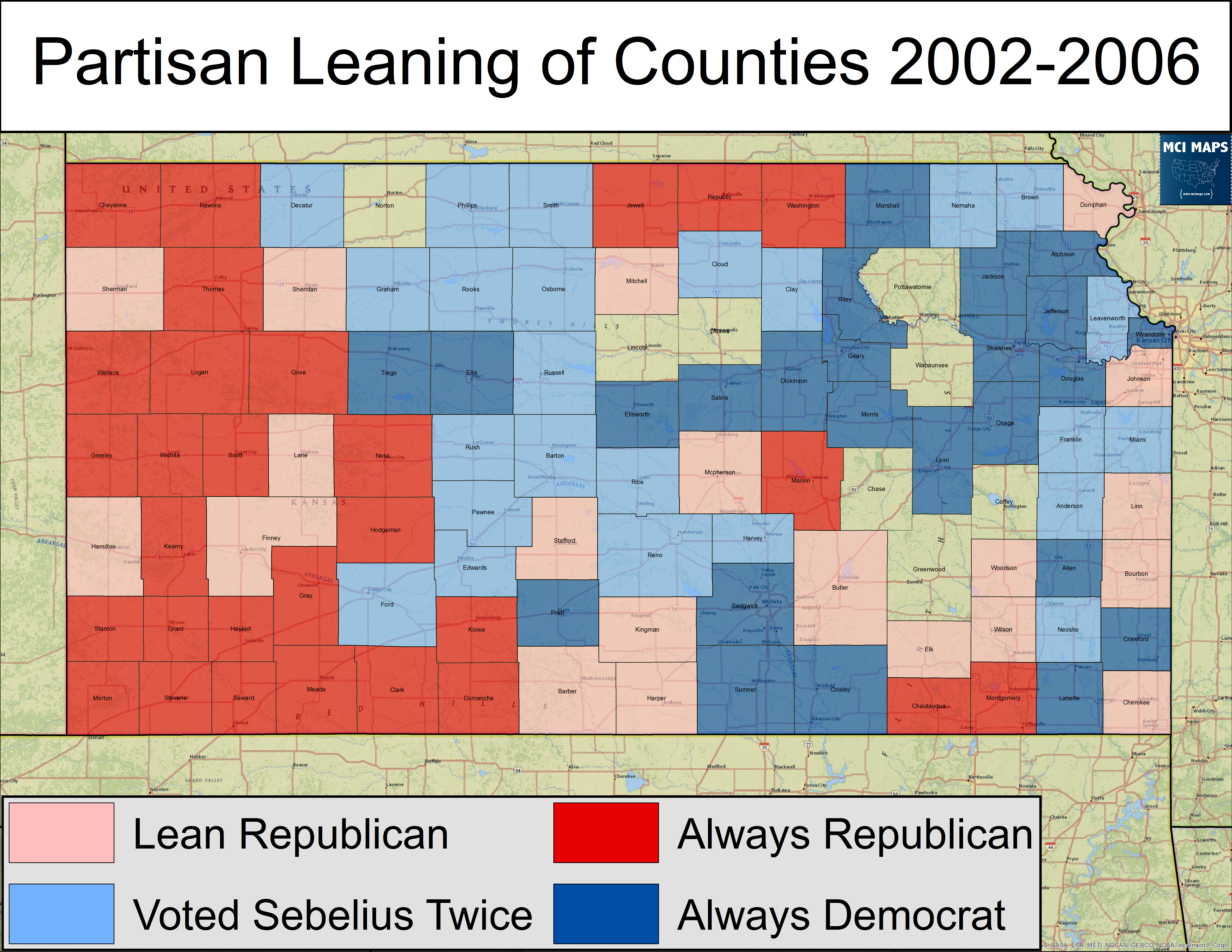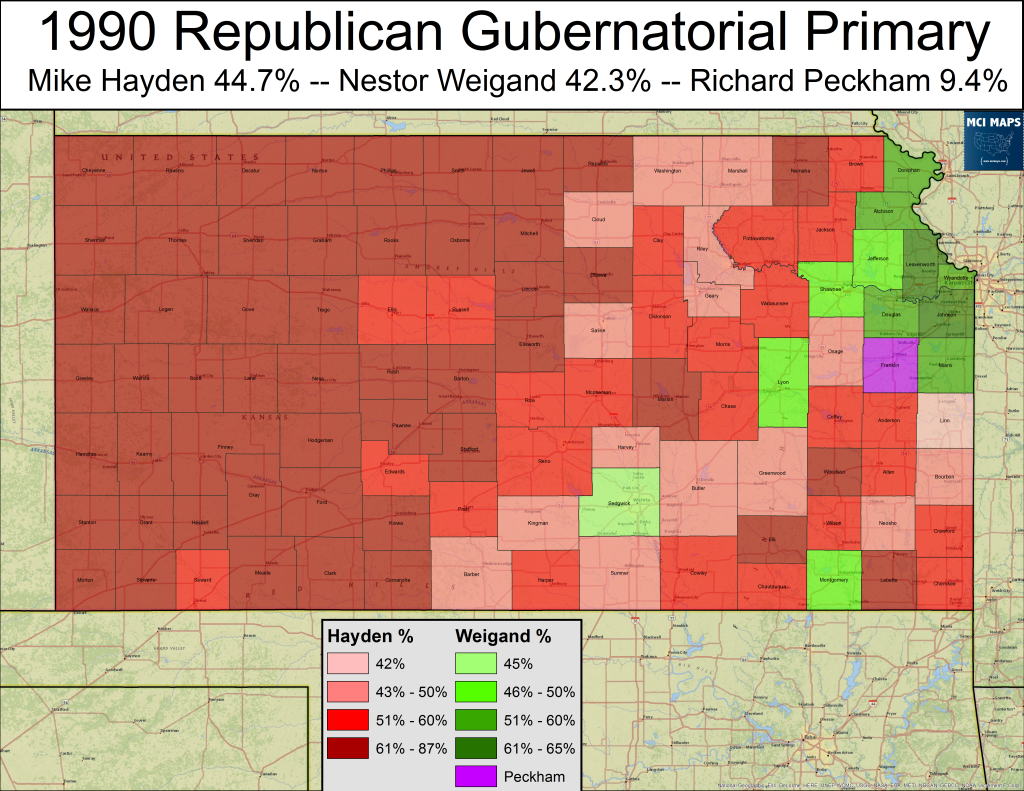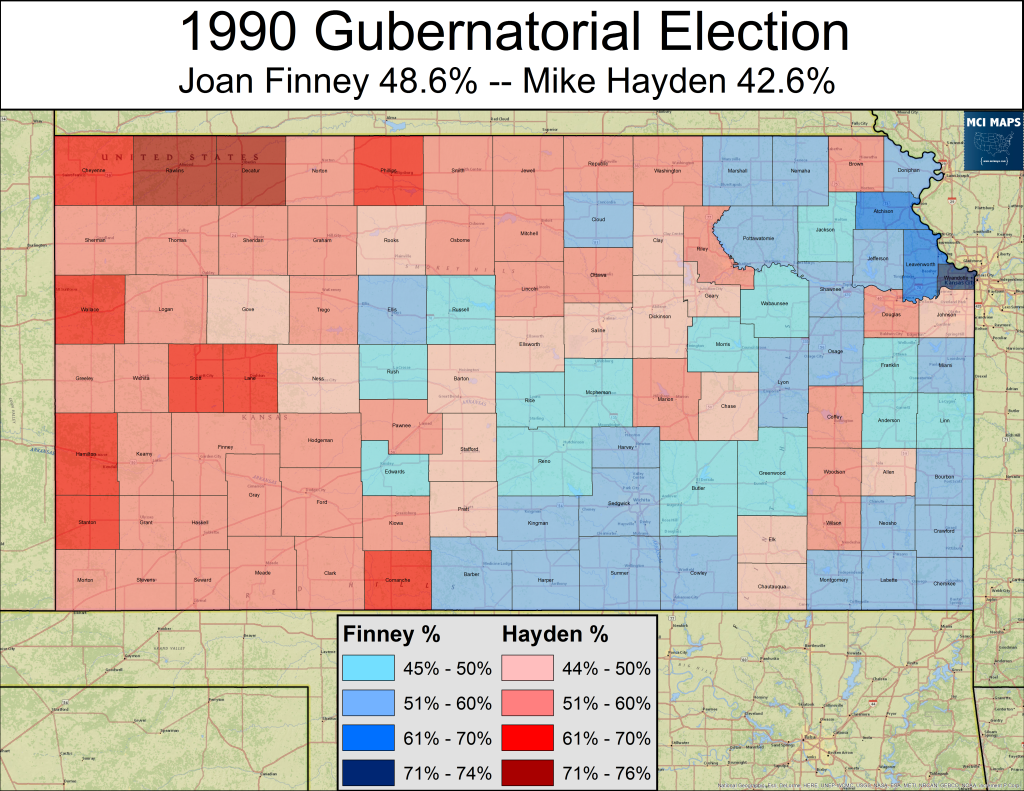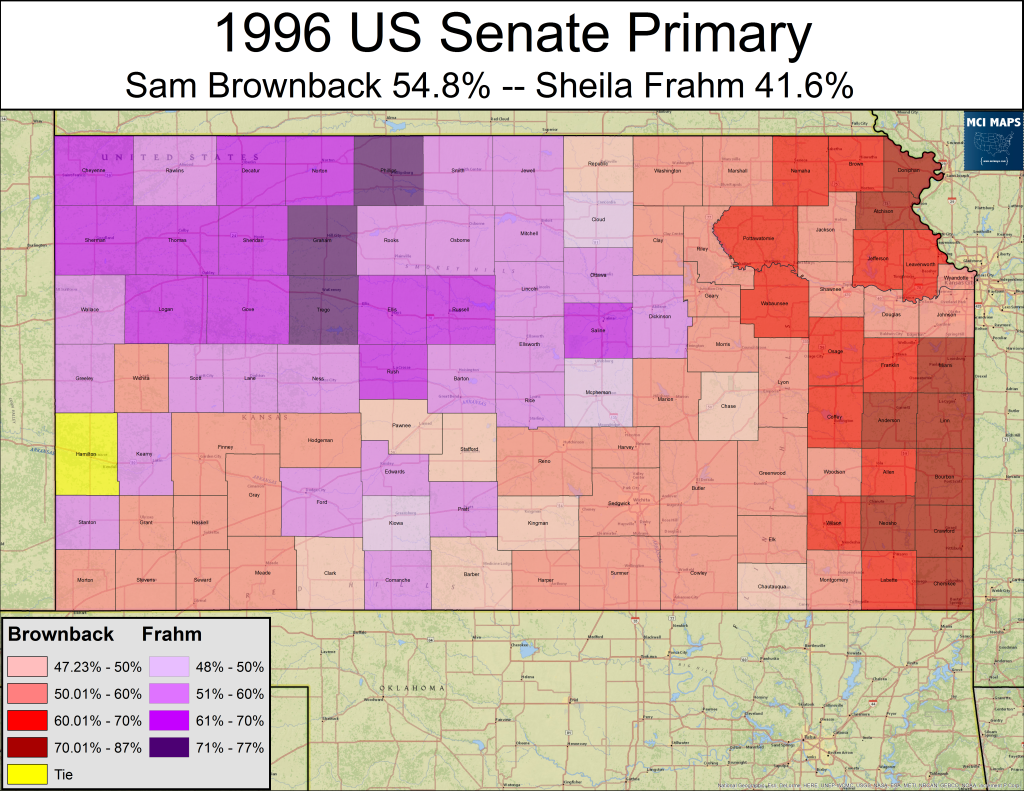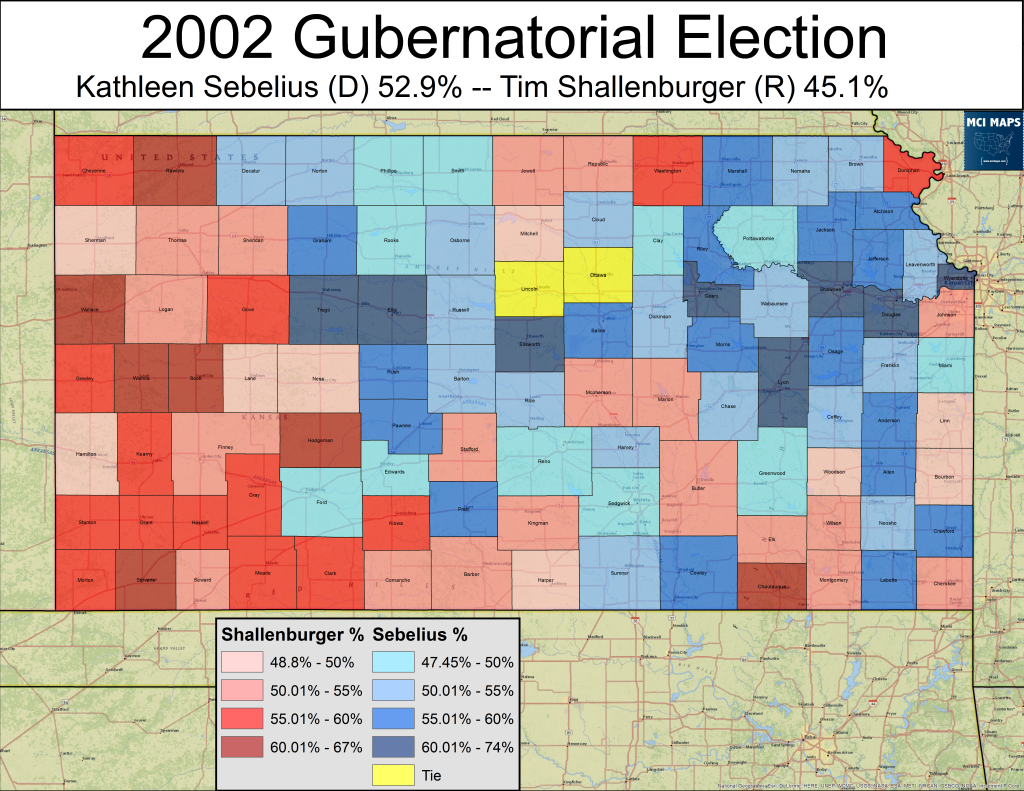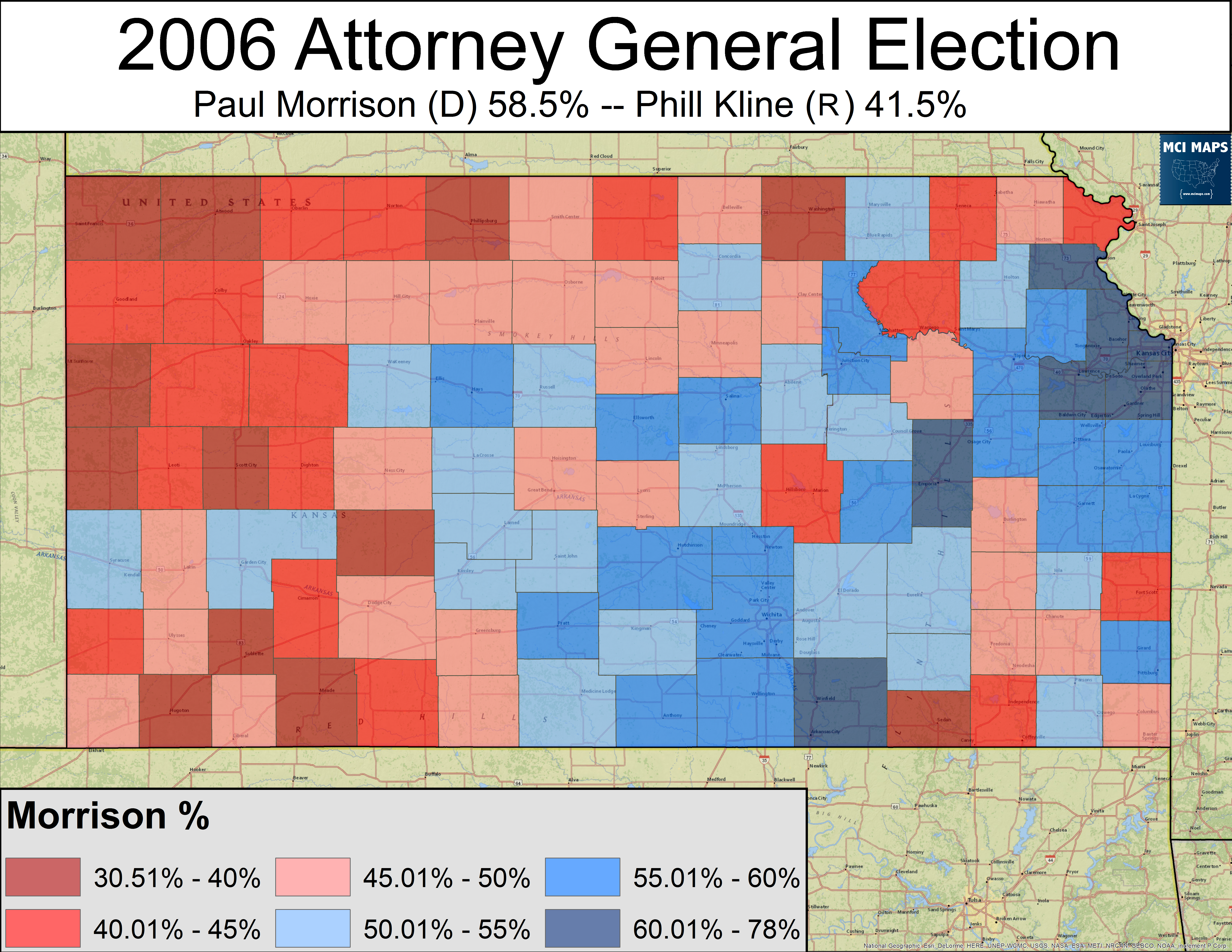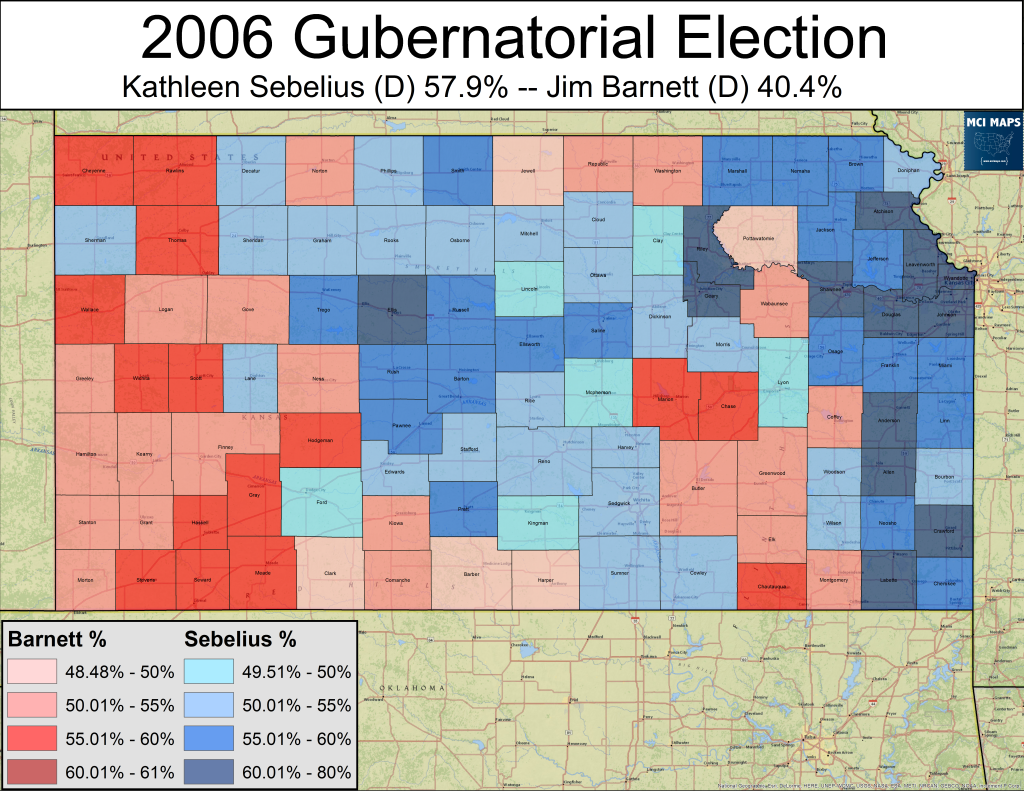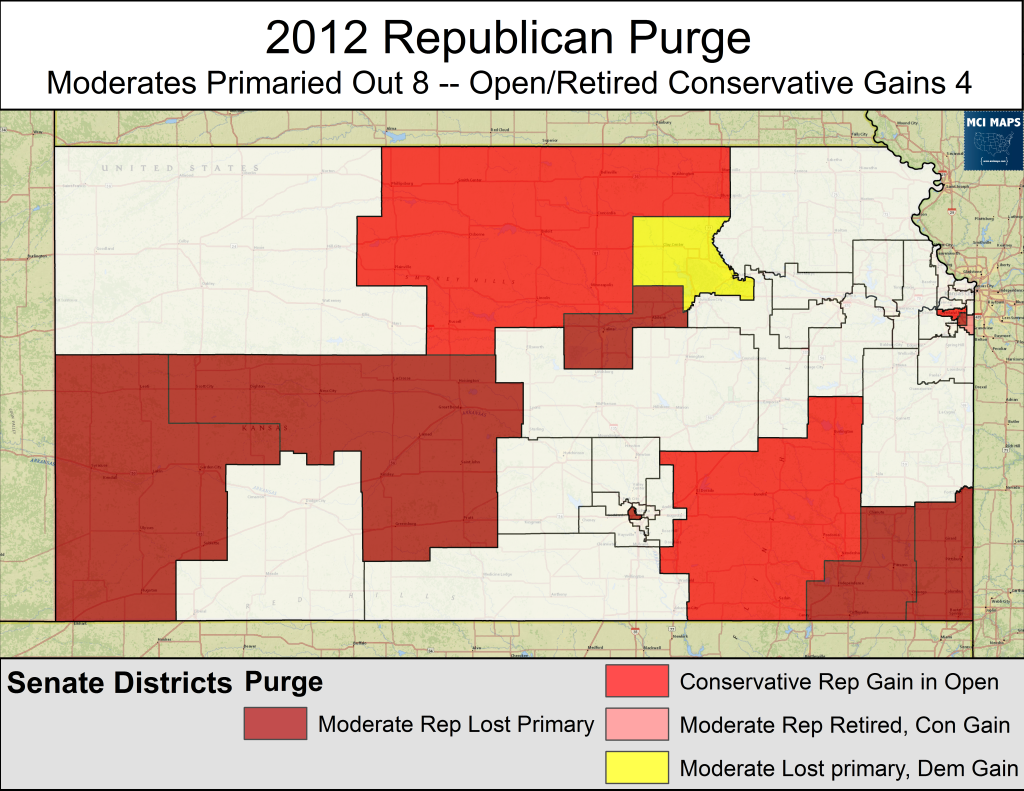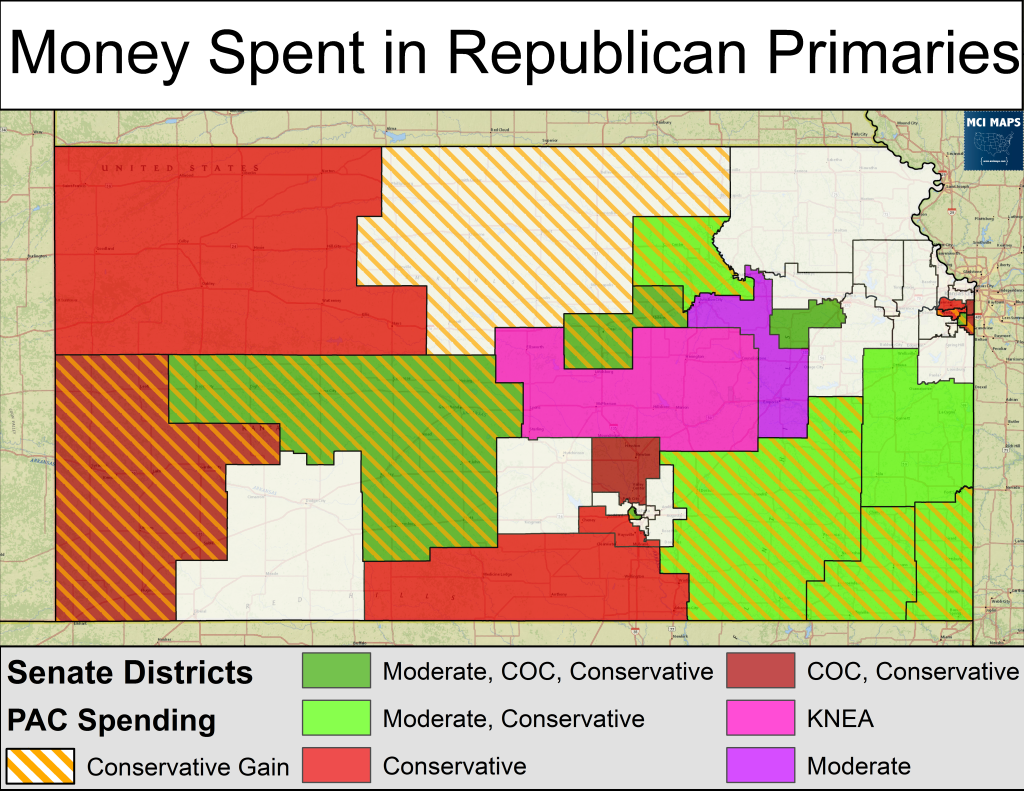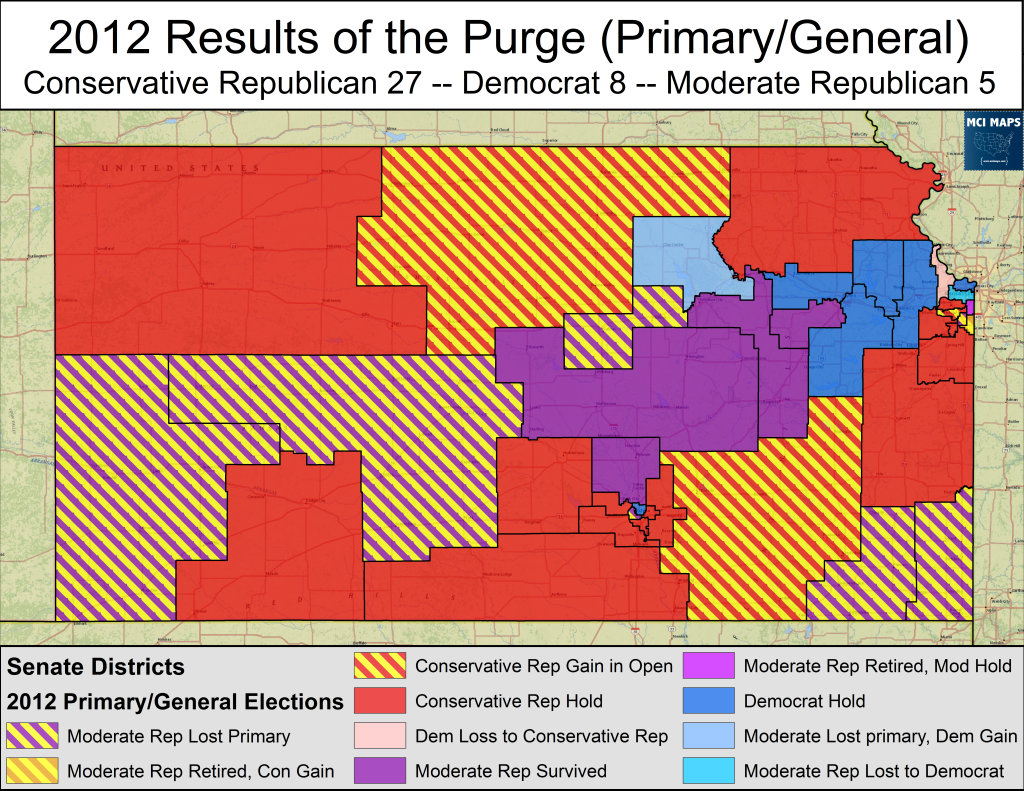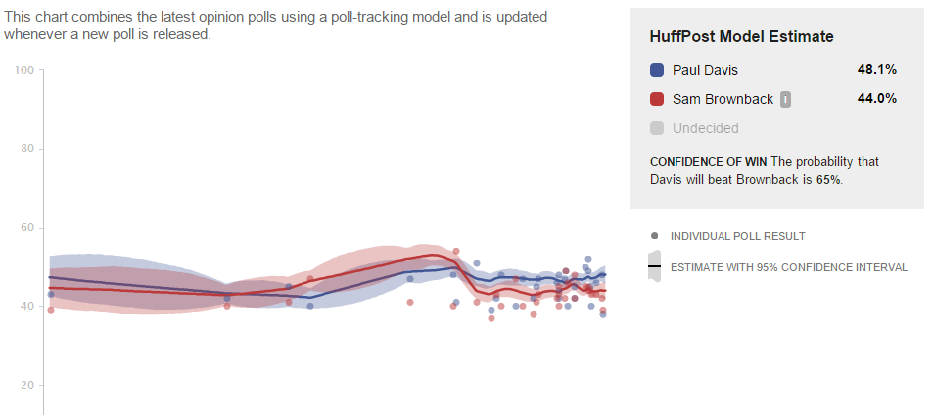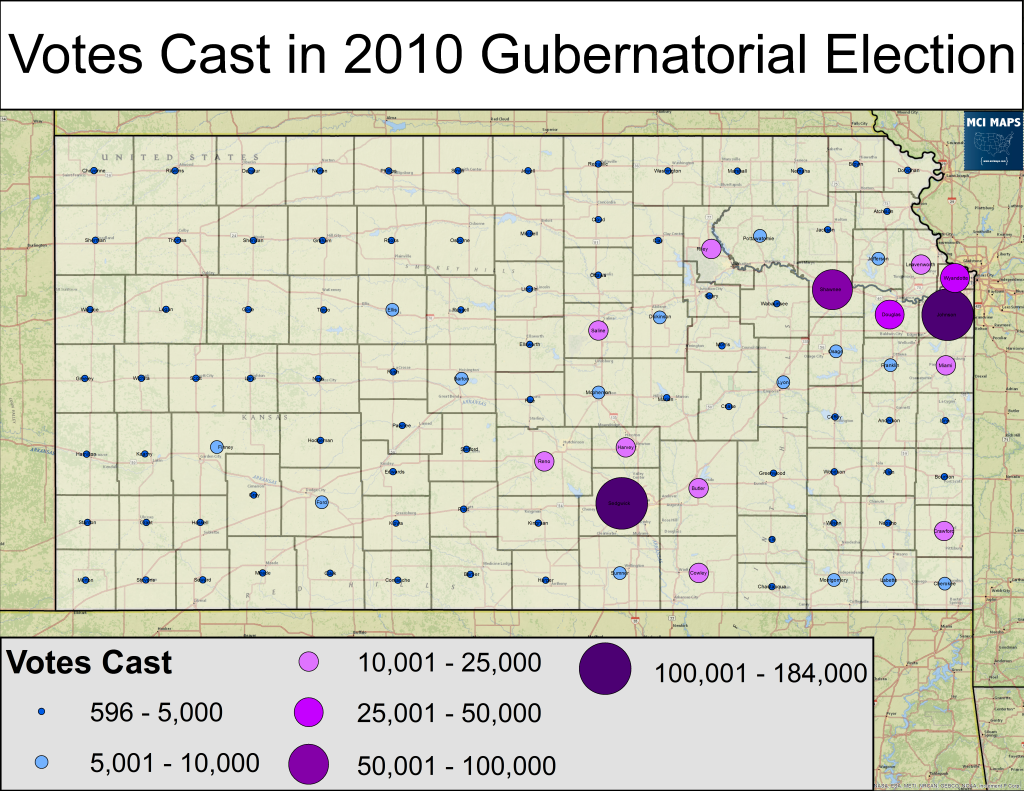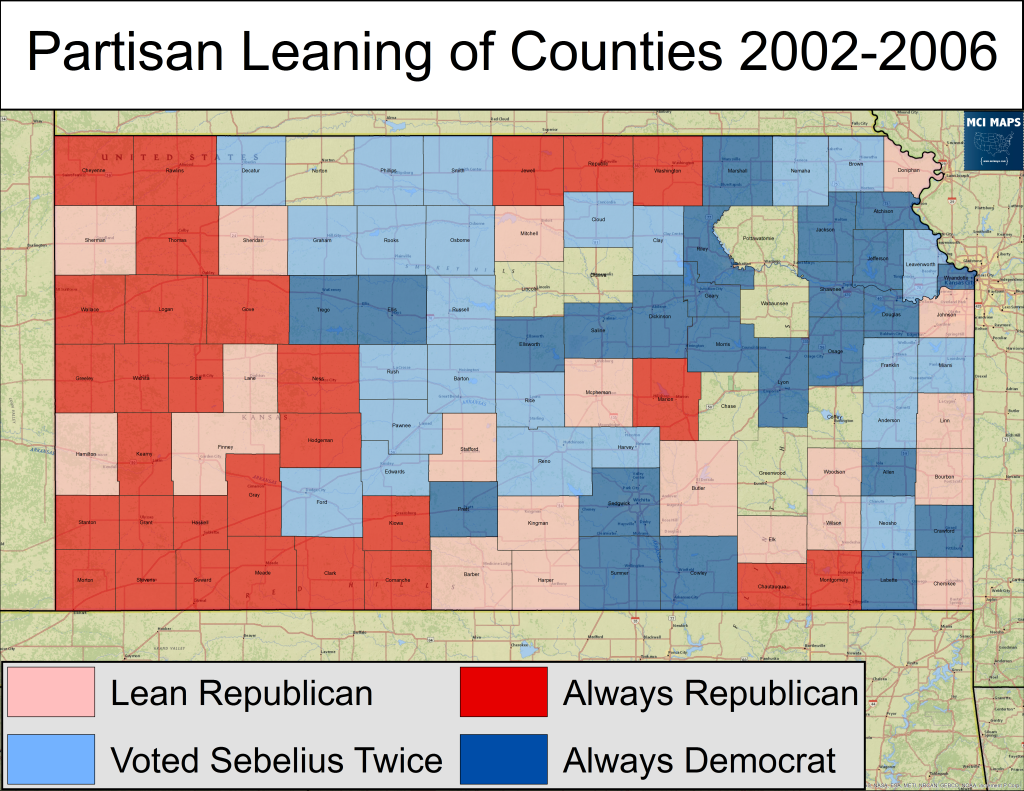By 2010, Sam Brownback had served as a Senator for Kansas for 14 years. The deeply conservative Republican was much more visible than his Senate counterpart, Pat Roberts. Brownback had been written up by The Washington Post, New York Times, Rolling Stone, and countless other publications. Brownback served as a key leader of the Christian Right in America. His stringent opposition to gay rights and abortion endeared him the church crowds. With Pennsylvania Senator Rick Santorum’s defeat in the 2006 midterms, Brownback became the de-factor leader of the evangelical hard-right in the US Senate. Brownback even made a brief run for President in 2008 to push his issues. Brownback could have likely served in the Senate as long as he desired, pushing his conservative vision. However, Brownback had other plans for his legacy. The Senator, who’s term was up in 2010, opted to run for the Governorship of Kansas. Brownback decided to take his brand of conservatives to the state he represented in DC. Ironically, Brownback’s decision to run for Governor, and his subsequent administration, has permanently damaged his legacy in Kansas.
Kansas as a Three Party State
Before delving into Brownback’s Gubernatorial administration, lets take a look at the complex politics of Kansas.
Casual observers of Kansas see it as just another Republican farm-belt state in the middle of the country. However, Kansas politics are much more complicated than they seem. The state has a long history of infighting within the Republican Party. Countless books and papers have been written on the subject, including the famous What’s the Matter With Kansas. The divide is between two key groups: Evangelical Conservatives andSocial/Fiscal Moderates. The Evangelicals are pro-life and insist on low taxes and spending. The Social and Fiscal Moderates are often pro-choice, or modestly pro-life, and favor higher taxes if needed for programs like education funding. In many states, the moderate factions of parties are suppressed. However, in Kansas, the moderates ruled the state party for many years. In fact, Sam Brownback’s election in 2010 made him the first Conservative Republican governor of Kansas in decades; every other Republican had been a moderate. For the purposes of this history, I am focusing on the 1990s and forward.
Beginning in 1990s, moderates controlled the state GOP and had done so for some time. However, evangelicals were beginning to work their way into the state GOP operation in preparation for a conservative revolt. The first shots were fired when the moderate Governor, Mike Hayden, was challenged in the GOP primary. Hayden was a pro-choice Republican who suffered from the state changing they way it evaluated property tax estimates. The results were a sharp rise in property taxes in Kansas. Nestor Weigand, a Realtor and pro-life, anti-tax advocate, challenged Hayden. The incumbent only won by 2% in the primary.
Hayden was weakened by the challenge and subsequently lost the general election to a pro-life Democrat, Joan Finney, who served as the state treasurer at the time.
Conservatives had damaged Hayden and cost their party the Governor’s mansion. They did not stop, however, and orchestrated a takeover of the state party in 1994, seizing control of the state party and electing a conservative chairperson. However, that same year, Bill Graves, the moderate Republican secretary of state, won the primary and general election to become governor. The conservative growth, however, continued into 1996. When Senator Bob Dole resigned the Senate to run for President, Governor Graves appointed his moderate Lt Governor, Sheila Frahm, to fill the vacancy. However, Sam Brownback, who had been elected to congress in 1992, challenged Frahm from the right in the special election primary and won.
Brownback was closely affiliated with the conservative evangelicals and his win further stressed divisions in the party. The State GOP Chair and Governor Graves had an icy relationship. However, the party did its best to put their issues behind them in late 1996 for the Presidential Election. However, the good will would not last long. In 1998, David Miller, the GOP Chair, a member of the conservative faction, challenged Governor Graves in the primary. Graves, benefiting from a strong economy and high popularity, easily beat back Miller with over 70% of the vote. In addition, the GOP moderates took control of the state party in the leadership elections in January of 1999.
By 2002, the conservatives were again trying to seize control. Meanwhile, the state GOP, under control of moderates, tried to open primaries to NPA voters (which would have likely boosted moderate Republican wins). In 2002, Graves was termed out, and both sides competed for the Governor’s mansion. The primaries in 2002 saw conservative versus moderate battles in several primaries. The primaries for Governor and Attorney General drew the most attention, with conservatives winning in both. The primaries saw Senator Brownback supporting a slate of conservatives, while outgoing Governor Graves and Senator Pat Roberts backed more of the moderates. On the Gubernatorial side, conservative Tim Shallenburger won the GOP primary thanks to split moderate opposition.
The primaries were bitter and caused problems for the Republicans heading into the General election. In the attorney General Election, very conservative Republican Phill Kline narrowly beat the Democrat.
Then, in the Gubernatorial Election, Kansas Insurance Commissioner Kathleen Sebelius beat Shallenburger by 7%.
Sebelius won with the endorsement of former GOP legislative leaders. Their endorsement of her proved the moderate faction favored policy and ideology over party loyalty. A key reason for GOP support for Sebelius was her commitment to education funding. Sebelius’ win, thanks to a split Republican party, was another culmination of the inter party war that has been raging for decades. Two years later, the conservatives won control of the state party. They elected Shallenburger chair, but pledged unity with the moderate faction of the party. However, such unity did not happen. By 2006, a democratic landslide year, more moderate Republicans were backing or running as Democrats.. Republican Paul Morrison decided to challenge Republican AG Phill Kline as a Democrat, and Kathleen Sebelius tapped a former GOP Chair to be her running mate.
In the attorney General election Phill Kline was damaged by his overzealous attitude toward abortion Kline drew national headlines for trying to subpoena the names of women who had received abortions. Kline’s zealous attitude toward abortion and unethical tactics would eventually result in his law license being revoked years later. In 2006 he faced Morrison, the District Attorney for Johnson County, a large Republican suburb. Morrison had the backing of Democrats and moderate Republicans, many whom gave to his campaign. The result was a big lose for Kline.
In the Governor’s race, Sebelius easily won a second term with the backing of even more moderate Republicans than in 2006.
2008 was a quieter year for Kansas politics, it was a Democratic year, but Republicans held control of the state legislature with little trouble. However, 2010 marked the start of a conservative revival. The 2010 midterms were a strong year for Republicans and Kansas conservatives took advantage of the rising Tea Party sentiment to take control of all six statewide offices in the state. Brownback easily walked into the Governors mansion, facing no serious primary and token general election opposition. The moderates had less leadership than in the past, many having become Democrats or backed them in recent cycles. Conservatives also gained a majority in the state house, holding 70 of the 125 seats, with the remaining being held by moderate Republicans or Democrats. With the election of Brownback as Governor, the last moderate institution in Kansas was the state senate.
Brownback’s Governorship
When Brownback became Governor, Evangelical conservatives had high hopes for massive policy shifts in the state. Brownback wanted to enact more pro-life legislation and slash taxes. However, Brownback quickly ran in to trouble from the state senate. Conservatives wanted to enact more right-wing legislation on voting, education funding, union strength, taxes, and abortion. However, the moderates in the Senate bucked conservatives on several occasions. The fighting got even more heated during the debate over changing the tax code for Kansas. Brownback and the conservatives wanted to drastically reduce income taxes and taxes for almost 200,000 small businesses in the state. The problem was the Governor had no plan to pay for the revenue shortfall that would follow. The state senate rejected the plan 20-20. However, they finally agreed to pass a similar bill to allow a conference committee to work out the differences between the two chambers and take it back to both chamber for a vote. Brownback, however, asked the house to just pass the Senate bill as it was, which included major tax cuts the senate never expected to remain after the conference committee met. Brownback had the house pass the tax cut bill and signed it into law. Brownback did not apologize for the trick, and took no steps to deal with the expected revenue shortfall the state would eventually experience. Brownback was unhappy being forced to work with the moderate Senate. He showed that displeasure when he vetoed a bill that would have benefited the oil and gas industry in Senate President Stephen Morris’ district– the bill had pass unanimously in both chambers. Brownback’s displeasure with the state senate was becoming more and more prevalent, and soon primaries were being rumored for the moderates in the Senate, including Morris.
The threat of primaries derailed redistricting in the state as moderates in the senate tried to pass new legislative boundaries that kept conservative challengers in other districts. The house refused to pass the senate boundaries, and the courts were eventually forced to step in and draw the lines themselves. By 2012, primaries against the moderate Republicans were in full swing, with Brownback leading the charge.
The Great Purge of 2012
In 2012, several GOP moderates in the senate faced primary challengers. The primaries became a major money fight, as funds from major PACs poured into the state. Brownback cast the primaries as a referendum on his first two years. While Brownback acted coy at times, he clearly backed the conservative slate while Koch Industries, whom were close allies with Brownback, funded conservative primary challengers. Detailed breakdowns on targeted races can be found here.
Moderate Republicans rallied together and called out Brownback on backing primary challengers.. Former Governor Bill Graves even swept in to aid moderates with endorsements and fundraisers. It quickly became apparent that the primaries were being financed by only a handful of conservative donors. The web of donations from conservative groups can be seen below.
The results were a bad night for Kansas moderates. Eight moderate senators lost their primaries, and four open seats from retiring or redistricted-out moderates fell into conservative hands. Stephen Morris, the Senate leader, also lost to his primary challenger.
Money had a major factor in the primary loses. In fact, the map below shows which groups spent in which districts. The map also dictates which district flipped from moderate to conservative.
The legend shows which interests spent money in the district. Conservative and moderate are obvious. COC means chamber of commerce (backed conservatives) and KNEA was Kansas National Education Association (backed moderates). In some races only conservative or moderate groups spent money. However, in many their was spending on both sides.
The last hope for moderates in Kansas was for Democrats to take some of the conservative-gained seats in the general election. Indeed several primaries Republicans backed the democrats running against their conservative rivals. However, only one seat flipped to the Democrats in November. Meanwhile Democrats lost a seat to a conservative Republican.
With conservatives now controlling both chambers of the legislature, Brownback could push even more right-wing legislation. The state has enacted a series of “reforms“ which include: loser gun restricting, increasing abortion restrictions, increasing restricting on registering voters, cutting arts funding, and throwing people off welfare and food stamps. However, Brownback has been plagued by the fallout of his tax cuts. As expected, the revenue shortfall has left state and local budgets grappling to survive.
The results of the revenue shortfall are that Kansas has the fourth highest education cuts in the nation. The shortage of cash for the school districts has been so bad thatschools are being force to close. Brownback has further agitated matters by trying to revamp the court system of Kansas. Currently, whenever a judicial vacancy opens up, a non-partisan merit committee gives the governor a list of finalists, and the Governor makes his selected from that list. Brownback argued for changes to the law to allow him to appoint judges of his own choice with Senate approval. This would have allowed him to make political appointments to the court that would be easily signed off by the conservative senate. The courts have often been very active in Kansas. Lower and higher courts issuing rulings demanding increases in education funding, arguing the legislature is constitutionally-bound to do so, have been a thorn in the sides of conservative. Brownback has pushed pushed through a bill that allowed him to select, and the senate approve, judicial candidates for the lower courts, without input from a merit committee. Any change the appointment of Supreme Court judges, however, would require a constitutional amendment, which is currently stalled. Brownback’s power-grab with the courts has also sparked concern among voters about the Governor’s respect for separation of powers.
2014 Elections
Brownback’s overreach and the deep financial pains of the state have put Brownback in a very vulnerable position for re-election. Brownback’s approvals fell into the 30s over a year ago and he received a strong Challenger from Paul Davis, the leader of the state house Democrats. Davis has led Brownback in most polls over the last year, and currently has an average of a four-point lead.
Brownback’s unpopularity was also seen when he only managed to get 63% in the Republican primary against an underfunded, unknown businesswoman. Brownback is also suffering from mass defections from moderate Republicans. Paul Davis was able to tout the endorsements of 100 current and former GOP lawmakers and officials.
In all likelihood, Brownback will lose re-election on Tuesday. The GOP divide that has taken down past Republicans is in full play here, and Brownback stands as one of the most unpopular Governors in the nation. Brownback is also not the only Republican in trouble. Kris Kobach, the conservative Secretary of State, is polling neck and neck with Jean Schodorf, a former Republican moderate senator who lost her primary in 2012 and is now running as a Democrat. Kobach also faced a primary in 2014 and only managed 64% against a no-name opponent. In addition, US Senator Pat Roberts is in a neck and neck race with Independent Greg Orman. It is entirely possible that after election day, all three of these Republicans will have lost their re-elections. This may seem like a striking development, however, Kansas’ unique politics make it a very real possibility.
What to Watch for on Election Night
Kansas is a very rural state, but it has a few key population centers. The map below shows the raw votes that were cast in the 2010 Gubernatorial Election.
Johnson County, in the eastern corner, is a key county to focus on. This moderate Republican suburb voted for Democrats in 2006 and narrowly for Republicans in 2002. It doens’t need to be won by Davis, but he needs to get into the mid 40s there to have a shot statewide. The counties moderation and concerns about education funding make it prime territory for Davis as moderate suburban Republicans put their concerns over the state’s dire financial situation ahead of party allegiance. If Davis actually manages to win Johnson County, he will be in for a healthy win statewide.
Davis needs to replicate the success of Democrats in the 2002 to 2006 era of Kansas politics; gathering moderate Republican support and keeping the Democratic base in line. The map below shows how Democrats and Republicans performed by county in those key years. I focused on the Governor and Attorney General elections, which are the most comparable to today since they were heavily contested.
The dark blue counties voted Democratic in the 2002 and 2006 Governor and Attorney General elections. The light blue counties voted Democratic in both Governor elections, but did not vote Democrat in the 2002 Attorney General Election — where the Democrat narrowly lost. The light red counties voted Republican in all 2002 races, but voted Democrat in 2006, which saw weak GOP candidates and a blue wave. The dark red counties voted Republican in all four race. If Davis is to win, he should likely do well in those blue counties on the map.
Kansas will be a state to watch on election night. National observes are closely focused on the Senate race that became competitive thanks to the missteps of Senator Pat Roberts. Brownback’s troubles, meanwhile, are years in the making. Brownback’s arrogance and far-right philosophy may finally doom him politically. Brownback has repeatedly said he wanted his far-right agenda to be seen as a conservative experiment. Brownback insisted the far-right legislation would boost Kansas’ economy and prove conservationism was the best court of action. However, with the budget deep in the red and education budgets being slashed, Brownback’s experiment has clearly failed. In most other red states, people like Brownback would win re-election regardless of their flaws thanks to pure party loyalty. However, Kansas’ unique politics make mean Brownback is far from save. The conservative firebrand helped finance the wins of conservatives in the state house and then in the state senate. Brownback purged his moderate enemies and built a nice little conservative empire for himself. However, failing in the polls and seeing members of his own party backing his Democratic opponent; it is clear Brownback’s Conservative utopia is on the brink of collapse.

